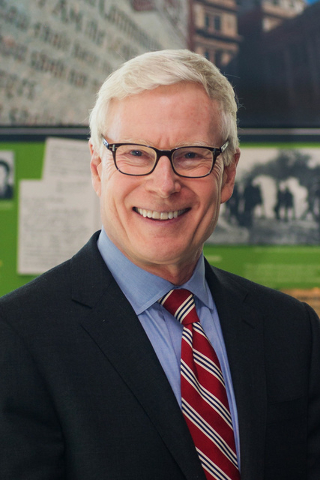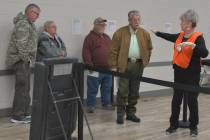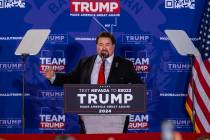Haynes: Genocide in Syria: Who lives, who dies, who cares?
A controversial milestone was reached on Aug. 29 when the U.S. government announced that 10,000 Syrian refugees have been resettled in our country so far this year, reaching the target set by the Obama administration for 2016.
Calling this number “a floor, not a ceiling,” administration officials promised more to come as a steady trickle of Syrians make it through the rigorous two-year vetting process.
Although the numbers are modest – one-fifth of one percent of the nearly 5 million Syrian refugees – 10,000 is far better than zero as advocated by some candidates during the presidential campaign.
Given the magnitude and urgency of the humanitarian crisis, the U.S. share should be more like 100,000 in 2016. This is, after all, genocide – the gravest crime against humanity under international law. ISIS is systematically eradicating Yazidis, Christians, Shia Muslims and other ethnic and religious minorities in territories controlled by the terrorist group in Syria and Iraq.
To compound the horror, the Syrian government targets and kills its own citizens based on their ethnic, religious or political background. According to international observers and reporters, the Bashar Assad regime conducts mass killings, murders civilians using barrel bombs and chemical weapons, destroys hospitals and blocks humanitarian aid.
Stopping genocide should top the list of America’s priorities – whatever the cost and sacrifice. Beyond significant national security concerns and strategic interests, the U.S. has a moral obligation to give asylum to the victims, provide humanitarian aid, and do whatever possible diplomatically and militarily to halt the killing.
So where is the moral outrage? Where is the robust public policy debate on how best to act in the face of genocide?
In a campaign season dominated by personal attacks and celebrity trivia, many media outlets – especially cable news – largely ignore the fate of vanishing religious and ethnic communities in Syria and Iraq, choosing instead to feed Americans with a steady stream of “breaking news” about the latest Trump insult or Clinton email dump.
Occasionally, a powerful image or story from Syria will break through the noise and touch the heartstrings of the American public. Many tears were shed when the photo of a five-year Syrian boy named Omran Daqneesh went viral. Sitting dazed and bloodied in an ambulance in Aleppo, Omran briefly became the face of the human tragedy unfolding in Syria.
But as Dr. Zaher Sahloul wrote in the Guardian, “Shedding tears for the injured children of Syria is not enough… We say this is a powerful picture, but will it translate into meaningful action to protect these children? They are not dolls to cry over and then move on. That is the worst thing, everyone is looking at these pictures, but who will do anything?”
A veteran of a dozen medical missions to Syria, Dr. Sahloul has witnessed unspeakable suffering. “Every time I work there I treat children,” he wrote, “often so terribly wounded and traumatized that I wonder if the ones who survived were unluckier than the ones who died.”
What can we do for Omran and the other 8.4 million Syrian children who have been affected by the conflict in Syria? Few of us can join Dr. Sahloul on the ground in Syria (though a good number of American doctors and aid volunteers have done so). But every American can do at least three things right now:
First, give until it hurts. The single most important and immediate action we can take is to send money to one of the heroic organizations on the front lines of saving lives and giving refuge to the refugees. Top-rated charities providing humanitarian relief to Syrians include American Refugee Committee, Doctors Without Borders USA and the International Rescue Committee.
Second, speak up for admitting more Syrian refugees and volunteer to help families resettling in the U.S. Support aid to our friends and allies around the world who are struggling to resettle millions of people with limited resources.
Third, help put ending the genocide at the top of the national agenda. This would mean, among other things, requiring candidates for high office offer comprehensive diplomatic and military plans for addressing the crisis in Syria and Iraq.
What future generations will long remember about this moment in history is not bombastic rhetoric about border walls or deleted emails. Future generations will remember us – and judge us – by what we did or did not do to stop the genocide, the ultimate denial of religious freedom.
Charles C. Haynes is vice president of the Newseum Institute and founding director of the Religious Freedom Center. Email: chaynes@newseum.org. Follow him on Twitter: @hayneschaynes





















